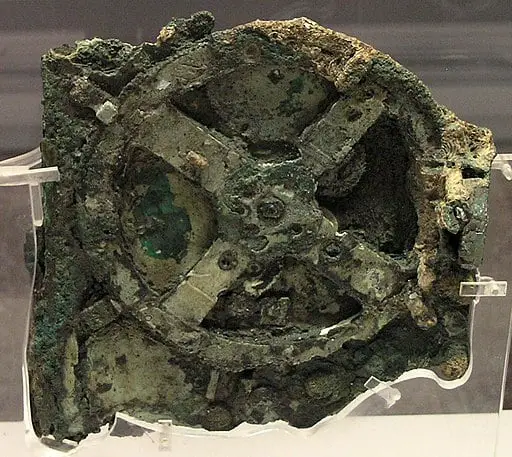The Antikythera Mechanism: The Ancient Greek Computer
What is it?
The Antikythera Mechanism is an ancient Greek analog computer and orrery used to predict astronomical positions and eclipses for calendrical and astrological purposes. It is often considered the world’s first mechanical computer.
Discovery
- Found in 1901: Discovered in the Antikythera shipwreck off the coast of the Greek island Antikythera by sponge divers.
- Age: It dates back to approximately 100 BC.
Structure and Function
- Complex Gearing: The device consists of a complex system of bronze gears housed in a wooden frame. The gears are intricately meshed to perform calculations.
- Astronomical Predictions: It could predict the positions of the Sun, Moon, and possibly the five known planets (Mercury, Venus, Mars, Jupiter, Saturn).
- Lunar and Solar Eclipses: The mechanism included a dial for predicting eclipses, based on the Saros cycle, a period of approximately 18 years.
- Zodiac and Calendar Cycles: It had dials showing the Zodiac and calendar cycles, indicating the passage of time and celestial events.
Significance
- Technological Marvel: The sophistication of the Antikythera Mechanism’s design and construction was not replicated for over a thousand years.
- Historical Insight: It provides insight into the advanced engineering and astronomical knowledge of the ancient Greeks.
- Inspiration for Modern Science: The discovery has inspired further study into ancient technologies and how they influenced modern science and engineering.
Current Research
- Ongoing Analysis: Researchers continue to study the mechanism using advanced imaging techniques to uncover more details about its construction and functions.
- Reproductions: Several working models and digital reconstructions have been created to better understand its operation.
The Antikythera Mechanism stands as a testament to the ingenuity and scientific knowledge of ancient civilizations, reminding us of the advanced technological achievements that existed long before the modern era.
Image credit
No machine-readable author provided. Marsyas assumed (based on copyright claims)., CC BY-SA 3.0, via Wikimedia Commons

